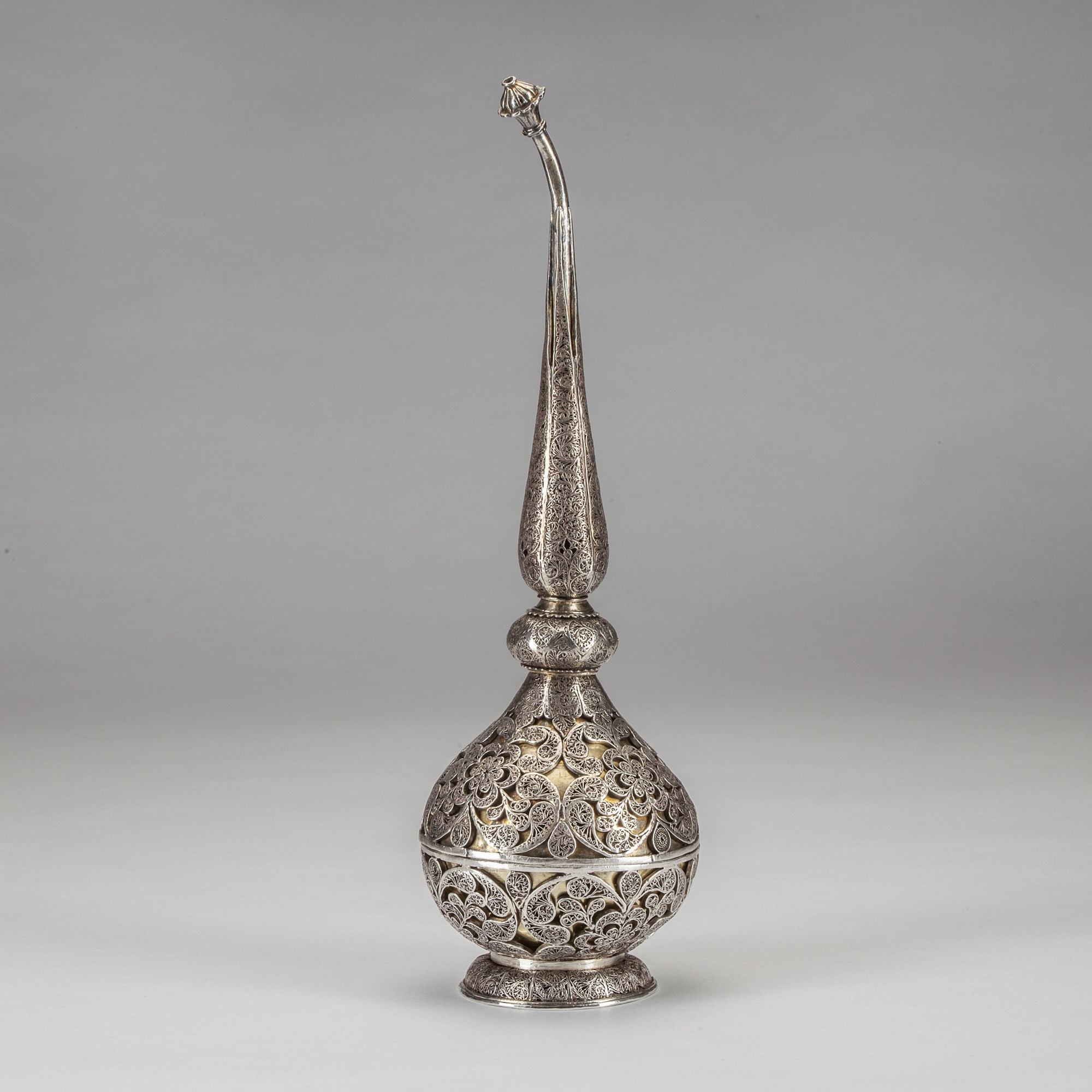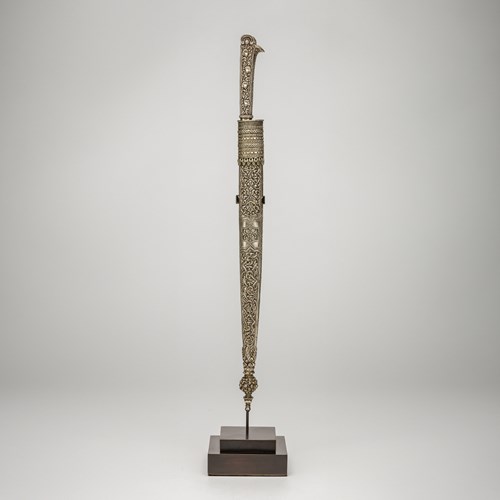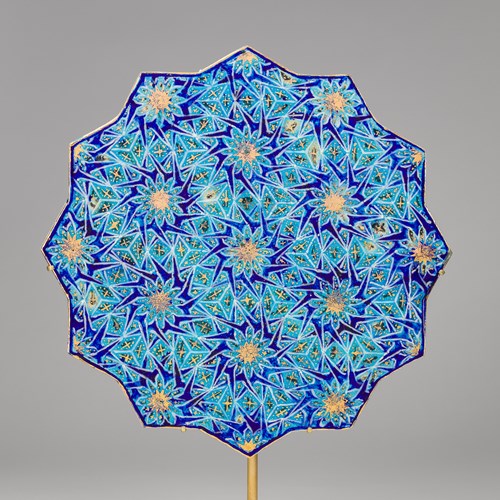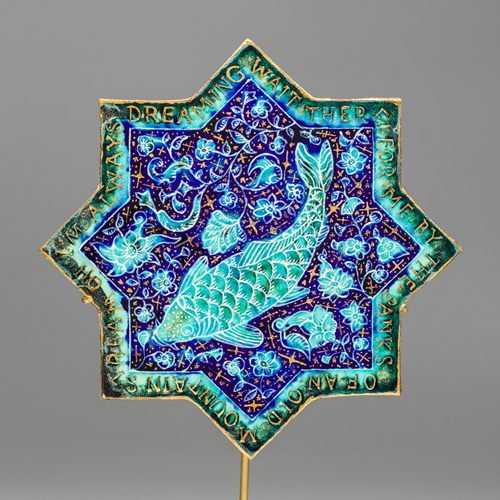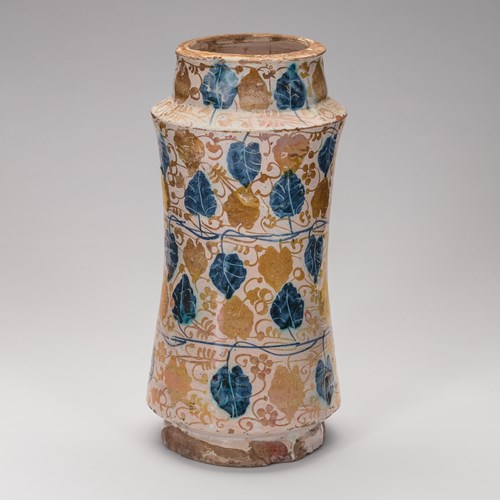Marketplace
Indian Rosewater Sprinkler
Indian Rosewater Sprinkler
Date 18th century
Period 1600-1750, 1750-1850, 18th century
Origin India, Deccan
Medium silver
Dimension 29 x 9.5 cm (11³/₈ x 3³/₄ inches)
The silver rosewater sprinkler is constructed of two layers. The inner layer of the spherical body of plain silver-gilt has been overlaid with a delicate filigree of floral openwork decoration. Rosewater sprinklers, gulabpash, originated in Persia but became popular in India and were especially used as a part of the courtly ritual. This finely executed rosewater sprinkler was made in Karimnagar during the 18th century. Other fine examples of Deccani filigree silver can be found on an exquisite toiletry set of Catherine The Great, including two filigree rosewater sprinklers, Deccan, circa 1740-50, in The State Hermitage Museum (Menshikova, p. 58).
Stock no.: A4377
Stock no.: A4377
Date: 18th century
Period: 1600-1750, 1750-1850, 18th century
Origin: India, Deccan
Medium: silver
Dimension: 29 x 9.5 cm (11³/₈ x 3³/₄ inches)
Literature: Menshikova, Silver: Wonders from the East, Filigree of the Tsars, Lund Humphries in association with The Hermitage Museum, Amsterdam, 2006.
More artworks from the Gallery


